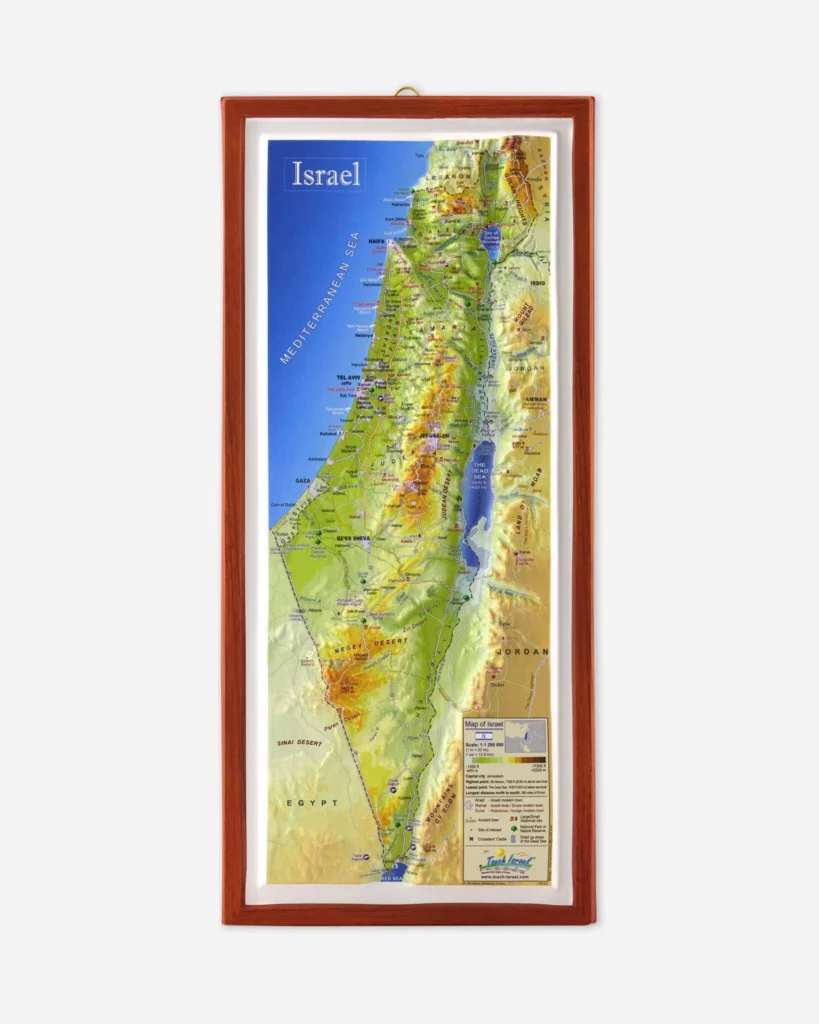
The Land You Can Touch
My childhood memories of long family road trips are filled with the rustling of paper maps spread across my lap. I would spend hours tracing the interconnected lines with my finger, imagining that my touch could magically transport me anywhere on the page. One moment I’d be following the roads to Pennsylvania to visit my grandparents, and with just a flip of the page and a determined pointer finger, I could instantly “travel” back home to Northern Virginia.
Today, living in Israel, that childhood fascination with maps has taken on a profound new meaning. Here, every ridge and valley tells a story that spans millennia, and the distances between biblical landmarks can often be crossed in less time than those childhood road trips. The geography quite literally unfolds beneath my feet in living color.
Take the journey from Jerusalem to Hebron, for instance. What was once a journey of our forefathers is now a mere 45-minute drive south. Here lies the Cave of the Patriarchs, where Abraham, Isaac, and Jacob, and the Matriarchs Sarah, Rebecca, and Leah rest. Standing at the walls of Jerusalem’s Old City, you can almost picture the ancient traders and pilgrims who passed through, their footsteps echoing across thousands of years of history. A short drive brings you to ancient Shiloh, where the Tabernacle stood for nearly four centuries. Here, where Hannah prayed for a son and where the priests served in the presence of the Lord, you can still walk among the ruins and stand on the very ground where the holy Ark of the Covenant once rested.
Modi’in, the ancient hometown of the Maccabees (and my home), holds the story of Chanukah within its very stones. The rolling hills where the Hasmonean revolt began still stand proud, marking where a small band of faithful Jews fought to preserve our tradition. The ancient burial caves and ruins tell the tale of Jewish resistance and triumph, while modern Modi’in flourishes nearby, a testament to the eternal connection between our past and present.
These places aren’t just points on a map – they’re touchstones of biblical heritage that connect us to the stories that have shaped countless lives across generations. Each location carries layers of meaning: historical, biblical, and deeply personal. When you stand at Masada overlooking the Dead Sea, you’re not just at the lowest point on Earth – you’re at the site of one of history’s most powerful testimonies to determination and sacrifice.
For those who can’t make the journey in person just yet, there are ways to experience this sacred geography tangibly. Just as my childhood finger traced those paper maps, you can explore the Holy Land’s topography in three dimensions, feeling the rise of Mount Carmel and the depth of the Jordan Valley. It’s a bridge between the flat words on the Bible’s pages and the living, breathing land where biblical history unfolded.
Whether you’re planning a visit soon, or seeking to deepen your understanding of biblical geography, exploring Israel’s landscape helps connect us to the literal ground where ancient faith took root. Every hill and valley here tells a story – stories that continue to shape our understanding of Scripture, history, and the eternal connection between the people and the Promised Land.
The post The Land You Can Touch appeared first on Israel365 News.
Israel in the News